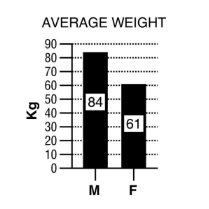Arteries and veins are constructed of how many tunics?
B) 2
C) 3
D) 4
Ans: C) 3
You might also like to view...
Table 1.3 shows data on various factors that may or may not be related to resting pulse rate, time to recovery to resting pulse rate after a few minutes of exercise, and reaction time measured by how quickly a student could press a keyboard key after seeing a computer-generated prompt. For each question below, write a testable hypothesis, identify the dependent and independent variables, sketch
an appropriate graph of the results, and draw a conclusion from the data presented in the table. Discuss your results.
A. Does caffeine consumption have an effect on resting pulse rate?
B. Does age play a role in resting pulse rate? Does weight?
C. Is there a relationship between eating breakfast and recovery time?
D. Is there a relationship between reaction time and height?
E. Do women who smoke show differences in their resting pulse rates compared to female nonsmokers or to
male smokers and nonsmokers?
F. Does regular exercise have an effect on resting pulse rate?


The plasma component that forms fibrin, the insoluble protein, in a blood clot is ________.
A. albumin B. globulin C. fibrinolysis D. Na+ E. fibrinogen
What site is commonly used to feel a pulse?
a. aorta in the chest b. radial artery on the wrist c. internal jugular vein in the neck d. subclavian artery in the neck
Cells do not synthesize new organic components for which of the following reasons?
A) structural maintenance B) growth and repair C) production of secretions D) creation of essential amino acids E) regulation of homeostasis